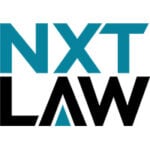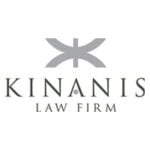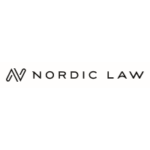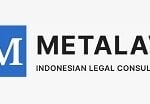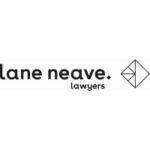-
Please provide a high-level overview of the blockchain market in your jurisdiction. In what business or public sectors are you seeing blockchain or other distributed ledger technologies being adopted?
The blockchain market in the United States of America (“United States” or “US”) is one of the largest in the world by adoption, even when adjusted for GDP per capita on a purchasing power parity basis. Adoption in the United States continues to grow in terms of the public’s interaction with crypto assets and the use of blockchain or other distributed ledger technology more broadly. Adoption has grown in 2025 mostly due to the continued growth in stablecoins and interest from institutions. From a retail perspective, polls suggest that “almost all Americans say they have at least heard of cryptocurrency; just 5% say they haven’t” although the amount of knowledge about the asset class and technology, as well as appetite for owning or using it, is varied across age, gender and socioeconomic lines. Similarly, despite the volatility of crypto asset prices, statistics from the crypto asset industry indicate that over 50 million Americans own crypto assets. With respect to participation in blockchain technology more broadly, it is notable that one quarter of all nodes on the Ethereum Network, and one third of all nodes on the Bitcoin Network are based in the United States. These figures are approximately double that of the next largest country.
Private sector adoption continues to grow.
The adoption of blockchain technologies is being led primarily by the private sector and most use cases to date are financial in nature. The United States is home to several of the world’s largest centralized crypto asset trading platforms, such as Coinbase, Kraken, Gemini, itBit, and Binance US, as well as the development teams for several of the world’s largest decentralized finance (“DeFi”) protocols, such as those helping develop Uniswap, on which crypto assets are exchanged and traded. It is also home to blockchain infrastructure providers, including many of the world’s largest crypto wallet providers, such as Consensys, and blockchain forensics companies, such as Chainalysis.
DeFi applications like Uniswap and Aave have seen rapid adoption both in the United States and around the world. These platforms provide financial services such as lending, borrowing, and trading, all powered by smart contracts on public permissionless blockchains. At any given time, billions of dollars worth of crypto assets are “locked” in various DeFi platforms, highlighting the growing user demand for alternative financial solutions. However, DeFi also faces scrutiny from regulators over concerns regarding anti-money laundering (“AML”) and investor protection. Many DeFi applications, including Uniswap and Aave, use governance tokens (in the form of UNI and AAVE, respectively) through which token holders can issue and vote on proposals related to the governance of the application.
Traditional financial and other institutions have also developed and integrated blockchains into their businesses. For regulatory reasons, these financial institutions have previously focused on private, permissioned blockchains, rather than public, permissionless blockchains such as the Ethereum Network. For example, global banks such as JP Morgan have performed blockchain-based collateral settlement transactions on its private blockchain, and both Goldman Sachs and Citi have launched their own private blockchains. Alternatively, when public, permissionless blockchains have been used by these financial institutions, it was typically as a secondary ledger, with the “official records” for transactions maintained in traditional formats. Broadridge Financial uses the VMWare Blockchain to facilitate $70 billion worth of repurchase agreements each day, Citi has conducted proof-of-concepts relating to tokenizing private funds, and Franklin Templeton records a money mutual market fund on the Stellar Network that has over $700 million in net assets. BlackRock issued a tokenized fund on the Ethereum Network that has approximately $3 billion in net assets.
A more permissive regulatory posture in the United States has begun to enable these financial institutions to launch projects directly on public blockchains. Examples include JP Morgan launching a deposit token proof of concept directly on Coinbase’s public Base blockchain (though limited to users who have been onboarded by J.P. Morgan) and payments company Stripe enabling payments in stablecoins on the Ethereum, Solana, Polygon and Base networks. In total, reports suggest that 80% of all the Fortune 100’s blockchain-related projects were conducted by technology and financial services firms, and the crypto asset industry reports that 56% of Fortune 500 companies have blockchain-related projects underway.
Institutional adoption of digital assets as a class of investment asset increased in the United States following the launch of spot bitcoin exchange traded products (“ETPs”)—an example notable due to it being possible only upon receipt by the industry of regulatory clarity. As of October 2025, spot bitcoin ETPs held over $150 billion in assets under management. Subsequent to the Securities and Exchange Commission (“SEC”) approving the listing of spot bitcoin ETPs, it has approved the listing of spot ether ETPs as well as the listing on a national securities exchange of one multi-asset digital asset ETP. The SEC also provided the investment industry with clarification in 2025 that digital asset ETPs could operate an in-kind redemption program, for example, whereby investors could purchase shares of a bitcoin or ether ETP by providing the underlying asset, and sell shares of a bitcoin or ether ETP by receiving as compensation for giving up the shares the underlying asset, bringing bitcoin and ether ETPs in line with non-digital asset ETPs. Most recently, the SEC permitted national securities exchanges to adopt generic listing standards for digital asset based ETPs that enables filers and national securities exchanges to avoid the time-consuming process of filing an individual rule change request with the SEC for each new digital asset based ETP.
In terms of aggregate dollar values of transactions, Reports from 2023 suggested that the vast majority of the United State’s crypto asset market was driven by institutional adoption. In 2023, over 50% of all North American crypto asset transaction volume consisted of transfers of $10 million or more and over 75% consisted of transfers of $1 million or more. The mass institutional adoption described above in 2024 and 2025 with ETFs, digital asset treasury companies, and financial market infrastructure providers suggests that the percentages of transactions and market volume stemming from institutional adoption, rather than retail, may be continuing to increase.
Two blockchain uses in particular have begun to gain traction in the United States:
First, multiple US-based companies have created “stablecoins”—crypto assets the value of which is designed to remain pegged to a reference asset—most commonly the US dollar. Stablecoins have emerged as a critical tool for payment solutions. For example, US-based Circle issues USD Coin (“USDC”), which is widely used in both domestic and cross-border transactions, offering low-cost, near-instantaneous settlements. Major infrastructure providers such as Visa have partnered with stablecoin providers to integrate their stablecoins into payments networks, showing real-world utility for blockchain-based payments. In addition, on July 17, 2025, the US Congress passed the Guiding and Establishing National Innovation for U.S. Stablecoins Act (“GENIUS Act”), which was signed into law on July 18, 2025 by President Donald Trump. The GENIUS Act introduces the first federal regulatory framework for payment stablecoins, addressing consumer protection, financial stability, national security and anti-money laundering compliance, and establishes prudential requirements for the issuance, reserve backing and supervision of US-dollar-pegged stablecoins. Even though it is not yet in effect (as of the date of this chapter) and certain provisions depend on final implementing regulations, which are to be issued by the primary federal stablecoin regulators, a number of large institutions have reportedly begun issuing or considering whether to issue their own stablecoins in compliance with the GENIUS Act. Examples include Western Union announcing plans to launch a stablecoin on the Solana network, while Walmart and Amazon are reportedly exploring issuing their own stablecoins.
In DeFi protocols, stablecoins enable lending, borrowing, and other financial activities without the need for traditional financial intermediaries. Stablecoin transactions constitute between approximately 50 and 75% of all on-chain transaction volume.
Businesses as well as retail customers make payments in the US with stablecoins; for example, PayPal, which launched PYUSD with PYUSD’s issuer Paxos in 2023, has paid Ernst & Young invoices using the PYUSD stablecoin. Payments company Stripe enables payments in stablecoins on the Ethereum, Solana, Polygon and Base networks, meaning hundreds of thousands of US businesses have crypto asset payment capabilities through Stripe. Other crypto assets are also used in payments, albeit to a lesser degree than stablecoins. For example, bitcoin may soon be usable to pay taxes in Ohio and dogecoin can be used to buy certain products from Tesla. Despite the widening popularity of crypto asset ownership in the United States and the growth of stablecoins, the use of crypto assets for payments in the real economy remains relatively limited. For example, the Federal Reserve found that in 2024, 7% of US adults brought crypto assets or held them as an investment, but only 1% used crypto assets to buy something, make a payment, or send money to friends or family.
Second, tokenization of traditional financial and other assets—commonly regarded in the blockchain industry as “real world assets,” or “RWAs,” is increasingly being regarded as an important use case for blockchain technologies. RWA tokenization refers to the act of representing a non-crypto asset as a crypto asset on a blockchain ledger. To date, over $35 billion worth of RWAs have been tokenized, including over $8 billion of US Treasuries, approximately $18 billion of private credit assets, and approximately$3 billion of commodities such as gold.
Not all use cases in the United States are financial, however. Non-fungible tokens (“NFTs”) have become popular in the United States, especially in the entertainment and art sectors. The success of platforms such as OpenSea (an NFT trading platform), and NFT projects like Bored Ape Yacht Club (“BAYC”) and CryptoPunks, has demonstrated the commercial potential of crypto assets beyond financial applications. NFTs are also being integrated into nonfinancial use cases include restaurant NFTs and databases for doctors to manage sensitive health information. In other cases, NFTs overlap with financial uses, for example through tokenization of interests in US real estate.
A number of retailers of various sizes have also incorporated NFTs into their business, such as large companies like 7-Eleven and small companies like Atlas Cafe coffeehouse in San Francisco, although many companies shut down their NFT-based programs due to declining NFT usage or regulatory uncertainties, particularly as regulatory scrutiny of NFTs increased in 2024. For example, in July 2024 DraftKings announced it was discontinuing its “Reignmakers” NFT offering and its NFT marketplace, effective immediately, “due to recent legal developments,” and in August 2024, OpenSea announced that it had received a Wells notice from the SEC, indicating that the SEC was planning to sue OpenSea on the grounds that NFTs traded on its platform constituted unregistered offerings of securities in violation of the securities laws. Such regulatory scrutiny dissipated in 2025 and Yuga Labs, issuers of the BAYC NFT line as well as the crypto asset ApeCoin received a favorable ruling from a federal judge who dismissed with leave to amend a case in which plaintiffs alleged that BAYC NFTs and ApeCoins are securities under federal securities laws.
Public sector use cases are being explored, but have not yet been deployed at scale.
To date, the federal government has launched a number of investigations and initiatives into the potential use cases of blockchain technology. These investigations and initiatives are at various stages of maturity, though most remain at the exploratory stages.
The Board of Governors of the Federal Reserve System and several Federal Reserve Banks (the “FRB” and, with the Federal Reserve Banks, the “Federal Reserve”) have collaborated on a number of projects evaluating hypothetical central bank digital currencies (“CBDCs”), described more fully in question 2.
Elsewhere, the Department of the Treasury, the Government Accountability Office, the Office of Management and Budget and the Office of Personnel Management collaborated on a two-year study into the potential uses for blockchain technology in the federal government (i.e., an interagency blockchain). The review stated that: (1) more work is likely needed to prepare the federal government for interagency blockchains and (2) those agencies beginning to consider the process of implementing blockchain solutions should carefully compare the potential costs and challenges to the benefits of the technology and proceed accordingly.
Despite the federal government’s cautious approach to implementing blockchain technology, several non-financial use cases have been adopted. Some of the most widespread use cases to date relate to the defense and security sectors. For example, SIMBA Chain has developed a number of blockchain-based applications for the Department of Defense and the government’s strategic defense funding mechanism has provided SIMBA Chain $30 million to continue developing blockchain-based solutions for the US Air Force. The Department of Homeland Security also has a number of blockchain-based programs in various stages of development and testing.
Some state governments have also implemented blockchain-powered projects, such as the California Department of Motor Vehicles digitizing over 40 million car titles using blockchain technology in 2024. Other states have announced other ambitious plans but have yet to implement them, such as the Rhode Island Department of Commerce’s attempt to integrate records from a number of agencies across its state government into a single blockchain-based system.
The key theme influencing the use of blockchains in the US is the changing regulatory posture.
Generally, and as described more fully in the questions that follow, the blockchain industry in the US was prior to 2025 constrained to a large degree by unfavorable regulatory treatment and regulatory uncertainty. This regulatory quagmire related to both crypto assets and blockchain technology more generally. With respect to crypto assets, regulatory uncertainty existed and to a large degree still exists as to their proper treatment under a wide variety of laws, including securities laws, commodities, laws and tax laws. There is also uncertainty as to the regulatory classification for various users of blockchain technology. For example, it is unclear what requirements, if any, apply to nodes and miners (e.g., the extent to which money transmission, tax reporting, or sanctions laws apply). While the current administration has taken significant steps to provide regulatory clarity, as described in the questions that follow, the GENIUS Act is the only federal legislation that has passed to date and so despite the more permissive regulatory headwinds, there is still significant uncertainty as to any future long-lasting rules.
Notwithstanding the continued regulatory uncertainty, crypto assets are used across multiple sectors, from DeFi to gaming, and in the form of stablecoins and NFTs. The success stories highlight the country’s capacity for technological growth, but the limitations on their use—in particular for non-financial uses cases—emphasize the need to clarify legal hurdles and develop clearer regulatory frameworks.
-
Please outline the principal legislation and the regulators most relevant to the use of blockchain technologies in your jurisdiction. In particular, is there any blockchain-specific legislation or are there any blockchain-specific regulatory frameworks in your jurisdiction, either now or envisaged in the short or mid-term?
Federal blockchain-specific legislation
For several years, Congress attempted to pass a number of crypto-related bills, but was unable to do so successfully. Any progress that was made prior to the market breakdown and insolvency of a large number of institutions in late 2022 such as FTX was also set back several years by the fallout of these failures. During the Biden Administration, significant regulatory enforcement took place in the absence of federal legislation, in particular under securities and commodities laws. For example, the SEC, under former Chair Gary Gensler, pursued “vigorous enforcement efforts against many cryptocurrency players,” bringing nearly 100 crypto-related enforcement actions during his tenure.
To date, Congress has passed one major blockchain-specific piece of legislation that provides a regulatory framework for stablecoins. Legislation on market structure, tax, DeFi and other issues remain in various stages of flux. These efforts are described below, with a particular focus on market structure legislation which is the most advanced of the remaining topics. Other outstanding issues remain in earlier stages. For example, the House of Representatives voted on July 17th to move forward the Anti-Central Bank Digital Currency (CBDC) Act, discussed more fully in question 3, which prohibits the Federal Reserve from issuing a CBDC.
Stablecoin Legislation
In July 2025, the first new federal law covering stablecoins was enacted—the Guiding and Establishing National Innovation for US Stablecoins (GENIUS) Act.
The GENIUS Act establishes a regulatory framework for payment stablecoins—digital assets designed to be used as a method of payment and which the issuer is obligated to redeem for a fixed value. The bill limits “permitted issuers” to subsidiaries of an insured depository institution (“IDI”), federal-qualified issuers, and state-qualified issuers. For subsidiaries of an IDI, the primary regulator is the IDI’s appropriate federal banking agency, and for federal-qualified issuers, the primary regulator is the Office of the Comptroller of the Currency (“OCC”). Additionally, subject to a limited exception, a permitted issuer may opt into the state regulatory regime only if the issuer has less than $10 billion in outstanding payment stablecoins, and the applicable regulatory regime is “substantially similar” to the federal regime.
The GENIUS Act imposes numerous requirements on permitted issuers activities. For example, the Act requires issuers to maintain reserves adequate to back the payment stablecoins on at least a one-to-one basis. Additionally, Federal and State payment stablecoin regulators are obligated to impose capital, liquidity, and risk management requirements on permitted issuers which are “tailored to the business model and risk profile” of the issuers. The Act also allows the Federal regulators to require the adoption of a capital buffer if necessary. Among other notable requirements are certain public disclosure, auditing, and reporting requirements for issuers. Furthermore, the Act imposes certain limitations on permitted issuers activities, stating that permitted issuers generally may only (1) issue and redeem payment stablecoins; (2) manage reserves and provide custodial services for reserve assets; (3) provide custodial or safekeeping services; and (4) undertake any other activities that directly support the actions previously listed.
Market Structure Bills
The next big item on Congress’ crypto-related legislative agenda is market structure legislation.
In years past, one of the biggest hurdles to crypto asset and blockchain adoption in the US was the uncertain regulatory status of crypto assets under federal securities laws and the unsuitable and in many ways incompatible laws and regulations that would be applicable if crypto assets are securities. Several bills have been introduced that attempt to mitigate or remove this uncertainty and unworkability. Among others, Senators Stabenow and Boozman sponsored the Digital Commodities Consumer Protection Act of 2022; Senators Lummis and Gillibrand sponsored the Responsible Financial Innovation Act (“RFIA”); and then-Representative McHenry and others sponsored the Financial Innovation and Technology for the 21st Century Act (FIT 21). Each of these bills attempt, among other things, to regulate spot markets for the trading of crypto assets, primarily by attempting to clarify that the crypto assets are generally not securities and are therefore not subject to Securities and Exchange Commission (“SEC”) jurisdiction. Instead, these bills generally would expand the jurisdiction of the Commodity Futures Trading Commission (“CFTC”) over spot market crypto asset activities. While the House of Representatives passed FIT 21 in May 2024 on a relatively bipartisan basis, it is unlikely to gain any traction in the Senate due to the recent success of the CLARITY Act, a bill modelled after FIT 21.
The CLARITY Act was introduced in the House on May 29, 2025, and after receiving strong bipartisan support in both the Financial Services and Agriculture committees, the bill passed the House on July 17th by a 294-134 vote. Similar to the three bills mentioned above, the CLARITY Act aims to provide a clear regulatory framework for crypto assets in the United States, with a focus on defining the relevant jurisdictions of the CFTC and the SEC. If enacted, the bill would grant the CFTC broad regulatory authority over most transactions involving “digital commodities,” while limiting the authority of the SEC. Digital commodities are broadly defined as “a digital asset that is intrinsically linked to a blockchain system, and the value of which is derived from or is reasonably expected to be derived from the use of the blockchain system.” Notably, the definition excludes securities, and so digital asset securities would remain under the jurisdiction of the SEC.
According to the House Committees on Financial Services and Agriculture, the bill “establishes clear, functional requirements for digital asset market participants, prioritizing consumer protection while fostering innovation,” which has been a priority under the new administration. After passing the House on July 17th, the bill now awaits approval by the Senate.
Additionally, the Senate Committee on Banking, Housing & Urban Affairs released a report on June 24, 2025, outlining some high-level principles for market structure bills related to crypto assets. The report highlights the need for clarity in the crypto asset market, stating that new legislation should define the legal status of digital assets, and clearly allocate regulatory authority to specific agencies so as to prevent “an all-encompassing regulator from emerging.” Furthermore, the report emphasizes that regulation of digital assets should be “modernized” to allow for innovation, stating that principles designed for centralized firms should not be applied to decentralized protocols.
Additionally, the CLARITY Act would amend the GENIUS Act by altering a few existing sections and adding two additional sections. With regard to the existing provisions of the GENIUS Act, the CLARITY Act would amend the definition of “digital asset service provider” to specify that the term means any entity registered or required to be registered with the SEC or CFTC. The bill would also (1) amend two of the existing requirements under Section 4 of the GENIUS Act, adding further detail to the monthly certification and reporting requirements of permitted issuers; and (2) revise the provision prohibiting a “non-financial company” from controlling a Federal- or State-qualified payment stablecoin issuer.
Furthermore, the CLARITY Act would add a new section to the GENIUS Act titled “Commodity-Backed Payment Stablecoins” to specify that nothing in the bill prohibits a “commodity-backed payment stablecoin issuer from issuing a commodity-backed payment stablecoin,” and includes definitions of the relevant terms. Finally, the CLARITY Act would create a new section in the GENIUS Act that explicitly preserves the right of an individual to maintain a digital wallet to facilitate the lawful custody of digital assets, and the right to engage in peer-to-peer transactions with digital assets.
In the Senate, the most advanced market structure bill to date is the bipartisan RFIA. As of the time of this writing, only the portion of the RFIA developed by the Senate Banking Committee, which focuses on SEC and banking issues, has been released. It is expected that the Senate Agriculture will release its portion of the bill, focused on CFTC issues, in the near future. While sharing many similarities with the House’s CLARITY Act, the RFIA differs in several important respects. Like the CLARITY Act, the RFIA would grant jurisdiction over most spot crypto asset markets to the CFTC. The current version of RFIA does not include the concept of a “digital commodity” (though this may be included in the Senate Agriculture Committee’s portion of the bill), but would carve out an “ancillary asset” from the definition of “security” under the federal securities laws. An ancillary asset would be any intangible, fungible asset that is offered, sold, or otherwise provided to a person in connection with the purchase and sale of a security through an arrangement or scheme that constitutes an investment contract, so long as that asset does not give the holder (i) a debt or equity interest in that entity; (ii) liquidation rights with respect to that entity; (iii) an entitlement to an interest or dividend payment from that entity; or (iv) any other financial interest in that entity. Like under the CLARITY Act, the RFIA would require issuers of ancillary assets to comply with certain disclosure requirements to be promulgated by the SEC, until such time that the ancillary asset reaches a specified level of decentralization with minimal managerial or entrepreneurial efforts of the issuer.
As of the time of writing, bipartisan negotiations in the Senate appear to be ongoing but remain subject to the risk of roadblocks. For example, Senate Democrats in early October 2025 drafted what they described as a “starting position” on how the RFIA should regulate DeFi, which was ultimately leaked to the press and received significant blowback from the crypto asset industry and Republicans alike. It remains to be seen when or whether the Senate will pass legislation regarding market structure.
Blockchain-specific federal regulatory efforts
A number of US federal agencies and self-regulatory organizations (including the Financial Crimes Enforcement Network (“FinCEN”), Office of Foreign Assets Control (“OFAC”), SEC, CFTC, Financial Industry Regulatory Authority (“FINRA”), the Consumer Financial Protection Bureau (“CFPB”), the Department of Justice, the Department of Homeland Security, the Federal Bureau of Investigation, the Internal Revenue Service (“IRS”), the OCC, the Federal Deposit Insurance Corporation (“FDIC”) and the Federal Reserve) have also been examining the operations of blockchains, crypto assets, crypto asset users and the crypto asset markets. These federal regulators have focused, among other things, on the extent to which crypto assets can be misused to launder the proceeds of illegal activities, evade sanctions, or fund criminal or terrorist enterprises, as well as the general safety and financial stability of crypto asset trading platforms and other service providers that hold crypto assets for users (further discussed in question 5). In years past, these regulators issued only limited regulations and guidance pertaining to blockchains and crypto assets, and several regulators instead engaged in what many have referred to as “regulation by enforcement.” Both the guidance that was issued as well as the enforcement posture and priorities of these regulators have changed dramatically across administrations. However, an increase in formal regulation pursuant to notice and comment is very likely on the horizon with the recent enactment of the GENIUS Act.
Market Regulators
In April 2019, during the first Trump Administration, the SEC’s Strategic Hub for Innovation and Financial Technology had released a “Framework for ‘Investment Contract’ Analysis of Digital Assets” in which it explained the SEC staff’s views as to what factors may make a crypto asset meet the Howey test and therefore be an investment contract which is a security under US federal securities laws. Under the Howey test, a contract, transaction or scheme is an investment contract which is a security when there is (i) an investment of money, (ii) in a common enterprise, (iii) with an expectation of profits solely from the efforts of the promoter or a third party. Under the Biden Administration, the SEC used this framework and the Howey test to argue in enforcement proceedings that effectively all crypto assets were securities.
However, the SEC under the second Trump Administration has dropped or ended all non-fraud related investigations and cases related to crypto assets. Additionally, the Trump Administration’s SEC has formally rescinded or withdrawn many of the rules promulgated or proposed under the Biden Administration. On June 17, 2025, the SEC formally withdrew fourteen of the rules proposed by the SEC in prior years, including those covering broker-dealer transactions involving crypto assets; custody of digital assets; and DeFi protocols. In addition to more formal rulemaking, the SEC has also rescinded interpretive guidance previously issued by the agency. In March 2022, the SEC released Staff Accounting Bulletin No. 121 (“SAB 121”), which generally directed public companies that custody crypto assets on behalf of customers to recognize a liability on their balance sheet equivalent to the value of those assets, and also recognize a corresponding and offsetting asset. On January 23, just three days after President Trump took office, the SEC released Staff Accounting Bulletin No. 122 (“SAB 122”), formally rescinding SAB 121. The changes discussed above are emblematic of the current Administration’s swift departure from the approach taken under former President Biden with regard to the role that the SEC plays in the crypto asset market.
These examples of regulatory actions are part of the second Trump Administration’s broader policy regarding crypto assets discussed further in question 2.
Blockchain-specific state legislation
Over 300 different blockchain- or crypto asset-specific bills have been introduced across over 40 states as of October 2025. Most notable are significant pieces of legislation that provide for wholescale regulation of blockchain and crypto asset activities in those states. In Louisiana, the Virtual Currency Businesses Act (“VCBA”) was the first comprehensive state statute establishing a comprehensive standalone regulatory regime for crypto asset activities. The primary purpose of the Virtual Currency Businesses Act is to require licensure for any person to engage in “virtual currency business activity” with or on behalf of a resident of Louisiana. California has enacted a similar law, the Digital Financial Assets Law (“DFAL”), which will prohibit after July 1, 2026 any person from engaging in “digital financial asset business activity” or holding itself out as being able to engage in digital financial asset business activity, with, or on behalf of, a resident of California, unless it is duly licensed with the California Department of Financial Protection and Innovation. Both the Louisiana VCBA and California DFAL are based on the New York Department of Financial Services’ (“NYDFS”) “BitLicense” regulation, described below. Like the BitLicense, these two statutes define the relevant crypto asset category as “a digital representation of value that is used as a medium of exchange, unit of account, or store of value, and that is not legal tender, whether or not denominated in legal tender” subject to certain exceptions. Under DFAL, covered activities, “digital financial asset business activity” includes: “(1) Exchanging, transferring, or storing a digital financial asset or engaging in digital financial asset administration, whether directly or through an agreement with a digital financial asset control services vendor. (2) Holding electronic precious metals or electronic certificates representing interests in precious metals on behalf of another person or issuing shares or electronic certificates representing interests in precious metals. (3) Exchanging one or more digital representations of value used within one or more online games, game platforms, or family of games for either of the following: (A) A digital financial asset offered by or on behalf of the same publisher from which the original digital representation of value was received. (B) Legal tender or bank or credit union credit outside the online game, game platform, or family of games offered by or on behalf of the same publisher from which the original digital representation of value was received.”
Some states have introduced more specific legislation to address discrete issues with blockchains and crypto assets. For example, Wyoming enacted the Decentralized Unincorporated Nonprofit Association Act and New Hampshire enacted the New Hampshire Decentralized Autonomous Organization Act in 2024 to give certain qualifying decentralized autonomous organizations (“DAOs”) a separate legal entity status under applicable state law (where previously a DAO would likely have qualified as a general partnership or similar) and provide for the application of numerous traditional corporate legal concepts to such DAOs. Additionally, the New Hampshire legislature signed into law a new bill on May 6, 2025, that permits the state treasury to invest state funds into “precious metals and digital assets,” becoming the first state in the nation to pass such legislation. Other states have enacted legislation that purports to ban CBDCs, and a number of states have enacted changes to their implementation of the Uniform Commercial Code (“UCC”) (see question 9).
Blockchain-specific state regulatory frameworks
First proposed in 2014 and issued in June 2015, NYDFS’s so-called BitLicense regulation was the first comprehensive crypto asset regulatory framework in the United States. Like the statutory regimes in Louisiana and California, a person that engages in “Virtual Currency Business Activity” in New York is required to be licensed by the NYDFS. For these purposes, Virtual Currency Business Activity includes: receiving Virtual Currency for transmission or transmitting Virtual Currency; storing, holding, or maintaining custody or control of Virtual Currency on behalf of others; buying and selling Virtual Currency as a customer business; performing exchange services as a customer business; or controlling, administering, or issuing a Virtual Currency. As of October 2025, 36 entities were regulated by NYDFS either as BitLicensees or New York Limited Purpose Trust Companies with permission to engage in crypto asset activities.
To supplement the BitLicense regulation, the NYDFS has issued approximately a dozen pieces of guidance further shaping the activities of crypto asset businesses in New York. These pieces of guidance cover topics as varied as market manipulation, the use of blockchain analytics, the issuance of stablecoins, custodial structures, token listing, corporate governance and meme coins. The NYDFS has also issued guidance regarding crypto asset related activity for all New York banking organizations, whether or not currently authorized to engage in crypto asset activity.
Guidance
A number of federal agencies have issued guidance concerning the use of blockchain technology. The CFTC, for example, issued interpretive guidance in 2020 regarding “Retail Commodity Transactions Involving Certain Digital Assets.” The SEC has issued guidance in many forms. In 2017, the SEC issued the “DAO Report” in which it first explained why it believed crypto asset offerings may be securities transactions under the federal securities laws. Then, in 2019, the SEC issued more formal guidance in the form of its Framework for “Investment Contract” Analysis of Digital Assets. The Framework was explicitly “not a rule, regulation, or statement of the Commission, and the Commission has neither approved nor disapproved its content.” Elsewhere, senior staff of the SEC made public statements that the industry understood as guidance, such as when William Hinman, Director of the Division of Corporation Finance announced that “current offers and sales of Ether are not securities transactions.”
In the second Trump Administration, the SEC has released numerous statements regarding the crypto asset market. These include:
- The Division of Corporation Finance released a statement about meme coins on February 27, 2025, stating the staff’s views that the types of meme coins mentioned in the statement “do not involve the offer and sale of securities under the federal securities laws.”
- The Division of Corporation Finance released statements on March 20th and May 29th of 2025 stating the staff’s views that the mining and validation processes in proof-of-work and proof-of-stake networks do not fall within the scope of federal securities laws.
- The Division of Corporation Finance released a statement on April 4th 2025 stating the staff’s views that the stablecoins covered by the statement, offered and sold “in the manner and under the circumstances described in this statement, do not involve the offer and sale of securities.” Many of the stablecoins covered by this statement will likely be deemed “payment stablecoins” by the GENIUS Act and so would definitely not be securities under federal law under that act.
- The Division of Corporation Finance released statements on May 29th and August 5, 2025 stating the staff’s views that certain staking and liquid staking activities do not involve the offer and sale of securities.
- The crypto task force described in question 2 has also released numerous statements since its inception earlier this year.
It is worth noting that each of these statements by their own terms are “not a rule, regulation, guidance, or statement” of the SEC and “has no legal force or effect.” Relying on the statements above would not prevent a private plaintiff or a state Attorney General from pursuing claims against market participants on the basis that any of the activities described in those statements are securities or involve securities transactions.
Unlike the SEC, the federal prudential financial regulators have instead issued more formal guidance, reflecting their cautious approach to the industry as described in question 4.
The NYDFS, which regulates BitLicensees and New York chartered Limited Purpose Trust Banks with authority to engage in virtual asset activity, has issued various pieces of guidance to the entities it regulates and supervises as described in question 4.
Formal guidance (as distinct from, for example, regulation by enforcement and formal rulemaking) from other regulators has been sparse thus far. Notable exceptions include FinCEN, discussed further in question 5, which issued one of the earliest pieces of blockchain-related guidance in 2013, which it supplemented in 2019. FinCEN subsequently proposed formal blockchain-related rules.
-
What is the current attitude of the government and of regulators to the use of blockchain technology in your jurisdiction?
President Trump began his second Administration promising to make America the “crypto capital of the planet.” Within the first few days of the new Administration, President Trump signaled this shift by signing an Executive Order entitled “Strengthening American Leadership in Digital Financial Technology.” This Order, described below in more detail, repealed Biden-era crypto-related guidance and stated that it is “the policy of my Administration to support the responsible growth and use of digital assets.” President Trump has also made numerous statements in support of the crypto industry. When signing the GENIUS Act, discussed above, he pledged again to make America the “crypto capital of the world.” At conferences, President Trump has stated that “the United States is going to dominate crypto and the next generation of financial technologies.” President Trump has also linked crypto’s development to other policy goals. For example, he linked crypto to competition with China: “We’re gonna do something great with crypto because we don’t want China, or anybody else . . .” President Trump has also stated that the crypto industry “will unleash an explosion of economic growth, and with the dollar-backed stablecoin, help expand the dominance of the US dollar.”
The entire Administration, from the White House down and throughout various federal regulatory agencies, have adopted the shift in attitudes between the second Trump Administration and the Biden Administration that came before it.
The White House
President Trump issued an Executive Order on Strengthening American Leadership in Digital Financial Technology (the “Executive Order”) within the first week of his Administration. The Executive Order embodies the shift to the Trump Administration’s more pro-crypto stance. It directly repudiates the Biden Administration’s positions by revoking President Biden’s Executive Order on Ensuring Responsible Development of Digital Assets as well as the Department of the Treasury’s Framework for International Engagement on Digital Assets. The Order also created the President’s Working Group on Digital Asset Markets (the “Working Group”). However, the Executive Order also prohibits agencies from trying to create a Central Bank Digital Currency (“CBDC”).
The Executive Order also outlines, in broad strokes, the policy of the Trump Administration towards crypto. Overall, the Administration believes “[t]he digital asset industry plays a crucial role in innovation and economic development in the United States” and states that it is the Administration policy “to support the responsible growth and use of digital assets, blockchain technology, and related technologies . . .” The Executive Order goes on to outline how the Administration will achieve these goals, including “protecting and promoting the ability of individual citizens and private-sector entities alike to access and use for lawful purposes open public blockchain networks without persecution,” “protecting and promoting fair and open access to banking services for all law-abiding individual citizens and private-sector entities alike,” and “providing regulatory clarity and certainty built on technology-neutral regulations . . . which are essential to supporting a vibrant and inclusive digital economy and innovation in digital assets, permissionless blockchains, and distributed ledger technologies.”
The Working Group released its report in July 2025 outlining its recommendations to Congress and various federal agencies reflecting the second Trump Administration’s “pro-innovation mindset toward digital assets and blockchain technologies.” In particular, the report recommends that Congress enact legislation regarding self custody of digital assets, clarify the applicability of Bank Secrecy Act obligations with respect to digital asset service providers, grant the CFTC authority to regulate spot markets in non-security digital assets, prohibit the adoption of a CBDC, and clarify tax laws as relevant to digital assets. In addition, the report recommends that agencies reevaluate existing guidance on digital asset activities, use existing authorities to enable the trading of digital assets pursuant to laws and regulations at the federal level, embrace DeFi, launch or relaunch crypto innovation efforts, and promote US private sector leadership in the responsible development of cross-border payments and financial markets technologies, among others.
President Trump also signed an Executive Order on the Establishment of a Strategic Bitcoin Reserve and United States Digital Asset Stockpile. This Order details the steps the Secretaries of Treasury and Commerce must take to create the Strategic Bitcoin Reserve, including creating “an office to administer” the Reserve and “develop[ing] strategies for acquiring additional” Bitcoin.
Federal Agencies
Federal agencies have taken note of the change in attitude towards crypto assets from the White House and have pivoted accordingly.
Market regulators
SEC
The Trump Administration’s SEC has embodied the 180-degree shift from the Biden Administration’s approach. While the SEC has brought enforcement actions against almost all of the large crypto asset trading platforms with US activities in the past and sued a number of other well-known market participants, including DAOs, issuers and foundations, NFT issuers, investment advisors, bank holding companies, as well as others alleged to have committed fraudulent or other illegal actions, the Trump Administration’s SEC has abandoned all of the non-fraud cases.
The SEC announced a new crypto task force “dedicated to developing a comprehensive and clear regulatory framework for crypto assets.” In contrast with prior SEC strategy which “relied primarily on enforcement to regulate crypto retroactively and reactively,” this task force “will . . . help the Commission draw clear regulatory lines, provide realistic paths to registration, craft sensible disclosure frameworks, and deploy enforcement resources judiciously.” Commissioner Hester Peirce leads the task force.
Commissioner Peirce’s statements, while technically not speaking for the Commission as a whole, have further elucidated the likely view of the task force. Commissioner Peirce described that “the [Biden-era] Commission refused to use regulatory tools at its disposal and incessantly slammed on the enforcement brakes as it lurched along a meandering route with a destination not discernible to anyone” and “the Commission’s handling of crypto has been marked by legal imprecision and commercial impracticality.” Therefore, the goal of the crypto task force is to make the crypto journey “more enjoyable and less risky.” Commissioner Peirce articulates a vision “where people have great freedom to experiment and build interesting things, and which will not be a haven for fraudsters” and a balance between “protecting investors” and “preserv[ing] industry’s ability to offer products and services.” According to Commissioner Peirce, the task force will work on many issues, including “Security Status,” “Coin and Token Offerings,” and “Crypto-Lending and Staking,” among others. The task force held a number of roundtables with industry participants to discuss these issues.
SEC Chairman Paul Atkins has largely echoed these views. At his confirmation hearing, he was critical of the past approach: “I have seen how ambiguous and non-existent regulations for digital assets create uncertainty in the market and inhibit innovation” and calling for a “rational, coherent and principled approach” to regulation in the digital assets industry. He has been more explicitly critical of the Biden-era approach as Chairman, stating that it “discouraged Americans from participating in these market-based systems” and “undermined innovation in self-custodial digital wallets and other on-chain technologies.” He has spoken favorably about the benefits of the industry generally, calling blockchains “a very creative and potentially revolutionary innovation” and the technologies generally as ones that “have the potential to revolutionize America’s financial infrastructure and deliver new efficiencies, cost reductions, transparency, and risk mitigation for the benefit of all Americans.”
Implicit in Commissioner Peirce’s statements is a narrower view of the Commission’s ability to regulate crypto assets. Commissioner Peirce notes that the “framework” the task force devises “will be within the statutory authority given to the Commission, and we will work with other regulators operating within their own statutory authorities.” Furthermore, “[i]f the Commission spots fraud that lies outside our jurisdiction, it can refer the matter to a sister regulator. If it does not fall within any regulator’s jurisdiction, the Commission can bring that gap to Congress’s attention.”
Commissioner Peirce, in an effort to combat the uncertainty caused by the SEC’s approach, has previously proposed a “Token Safe Harbor” whereby crypto asset and blockchain based entrepreneurs could launch their blockchain projects without needing to comply with federal securities laws. The safe harbor proposal, while not adopted, has served as a template for subsequent bills such as the RFIA (see question 1). Commissioner Peirce continues to advocate for a sandbox approach that would enable crypto asset entrepreneurs to develop their projects in legally compliant manners without risk of an SEC enforcement action. Most recently, she proposed to the Bank of England and the UK’s Financial Conduct Authority a cross-border “Micro Innovation Sandbox” that would allow firms to perform certain activities in the United States under a self-selected set of regulatory conditions.
CFTC
The CFTC is working hand in hand with the SEC on these activities. Like the SEC’s crypto task force, the CFTC launched a “crypto sprint” to implement the recommendations in the President’s Working Group on Digital Asset Markets report in August 2025. The CFTC’s announcement highlighted its Crypto CEO Forum, discussions with market participants, and withdrawal of “outdated” staff advisories and release of new guidance to improve regulatory clarity. The announcement also highlighted the CFTC’s planned coordination with the SEC.
The CFTC has to date announced three initiatives under its crypto sprint:
- On August 4, 2025, Acting Chairman Pham announced that the CFTC would launch an initiative for trading spot crypto asset contracts that are listed on a CFTC-registered futures exchange.
- On August 21, 2025, Acting Chairman Pham announced that the CFTC was inviting all interested stakeholders to submit feedback to the CFTC on how it could implement the proposals for it in the Working Group’s report, in particular, suggestions on listing spot crypto asset contracts on a DCM, including section 2(c)(2)(D) of the Commodity Exchange Act, Part 40 of CFTC regulations, and whether there are any implications under the securities laws or regulations with respect to an SEC framework for trading of non-security assets that are part of an investment contract.
- On September 23, 2025, Acting Chairman Pham announced that the CFTC was launching an initiative for the use of tokenized collateral including stablecoins in derivatives markets.
The SEC and CFTC have also issued two joint statements. First, on September 2, 2025, providing the respective staffs’ view that current law does not prohibit SEC- or CFTC-registered exchanges from facilitating trading of certain spot crypto asset products. The statement indicated that the SEC and the CFTC are coordinating efforts to facilitate the trading of certain spot digital crypto asset products on registered exchanges. Second, on September 5, 2025, the SEC and CFTC issued a joint statement on regulatory harmonization opportunities and subsequently held a joint roundtable on regulatory harmonization efforts. Potential areas of coordination identified include 24/7 markets, event contracts, perpetual contracts, portfolio margining, and innovation exemptions and DeFi.
More recently, at the time of writing, President Trump had nominated the Chief Counsel of the SEC’s crypto task force to be the next chair of the CFTC.
Banking agencies
The federal banking agencies have also begun to take a more permissive approach toward crypto assets, though have issued relatively fewer new guidance than the SEC. Of note, all three banking agencies have rescinded the various prior notice/approval guidance documents released during the Biden Administration.
Other agencies
The DOJ has taken an active role in enforcing criminal statutes against those involved in the blockchain industry, recently and most notably by bringing charges against the developers of the Tornado Cash application. However, the Department of Justice (“DOJ”) has issued a new memorandum on “Ending Regulation By Prosecution” which states that DOJ “will no longer pursue litigation or enforcement actions that have the effect of superimposing regulatory frameworks on digital assets,” instead leaving the regulation up to other agencies. Finally, as described in question 6, the IRS has altered various existing tax forms to account for crypto asset transactions and has introduced new forms and promulgated rules that would mandate custodial “brokers,” as defined by the IRS, to report investor sales and exchanges of crypto assets beginning in 2025.
Congress
As described in question 1, several crypto asset-related bills have been produced in Congress. For example, the GENIUS Act has now become law and the House of Representatives has passed two other bills: the CLARITY Act (a market structure bill) and the Anti-Central Bank Digital Currency (CBDC) Act. Politically, while crypto asset regulation and legislation is not immune from the partisan divide seen in American politics in recent years, these votes show support of the crypto industry becoming more bipartisan. However, there are still detractors in Congress, namely influential Democratic Senator Elizabeth Warren.
While some of the disagreements are along partisan lines, bipartisan consensus has been reached on some discreet issues, and the CLARITY Act was passed on a bipartisan basis.
States
As described in questions 1 and 12, a number of state regulators have entered into enforcement actions against crypto asset and blockchain companies. In addition, while networks utilizing proof-of-stake (“PoS”) consensus mechanisms have made strides toward energy efficiency, Bitcoin’s proof-of-work (“PoW”) mining continues to attract criticism in some states. Some US states, such as New York, have imposed temporary moratoriums on crypto mining operations pending environmental reviews. The New York moratorium ended after two years, but new bills have been introduced in the New York Senate targeting crypto asset miners to replace the moratorium. Others, such as Texas, which has been significantly more supportive of the blockchain industry, is considering new legislation based on fears about the energy consumption of crypto mining operations in the state.
Even so, states have generally been more accommodating than the federal government. For example, states including Arizona, Florida, West Virginia, Wyoming and Utah enacted legislation to create crypto asset sandboxes. In Hawaii, the state’s crypto asset sandbox concluded in 2024 and resulted in Hawaiian regulators determining that rather than introducing a special crypto asset licensing scheme in the Hawaii, crypto asset companies would no longer require a Hawaii-issued money transmitter license to conduct crypto asset-related business within the state.
-
Is there a central bank digital currency (‘CBDC’) project in your jurisdiction? If so, what is the status of the project?
Despite increasing international attention to CBDCs, and the launch of some high-profile CBDC such as in China, the US is unlikely to create one in the near future. The Trump Administration, in its crypto executive order, banned any agency “from undertaking any action to establish, issue, or promote CBDCs.” In the past, the Federal Reserve has explored CBDCs; however, any continuation of these actions is prohibited by the Executive Order. The House of Representatives also passed the Anti-Surveillance State Act, which prevents the Federal Reserve from acting in this area without prior approval from Congress.
There are other reasons a US CBDC is unlikely. First, many Republican legislators are opposed, making any pro CBDC legislation unlikely to pass in the current Congressional term. The House of Representatives passed a bill in July 2025 which would prohibit the Federal Reserve from issuing a CBDC and from using a CBDC to implement monetary policy. As described in question 1, a number of Republican-controlled state legislatures have also taken action to purportedly ban a US CBDC from being used in their states. Second, it is not yet clear what steps must be taken before the Federal Reserve is able to issue a US CBDC. Although the Chair of the Federal Reserve has stated that a US CBDC could only be implemented after obtaining Congressional approval, then Attorney General’s analysis of whether legislation is necessary for a US CBDC has not yet been made publicly available. Despite the hesitation in government, studies suggest that a slight majority of consumers are receptive to the concept of a US CBDC.
-
What is the current approach in your jurisdiction to the treatment of cryptoassets and decentralised finance (‘DeFi’) for the purposes of financial regulation?
In the United States, two major categories of financial regulation at the federal are those by the prudential banking regulators—the Federal Reserve, the OCC, and the FDIC—on the one hand, and the trading and markets regulators—the SEC and CFTC—on the other. As between the SEC and the CFTC, jurisdiction over a certain crypto asset or activities in crypto assets depends on the status of the crypto asset or activity as a security or as a derivative of a commodity. In the absence of federal legislation providing more clarity as to the proper financial regulatory treatment of crypto assets, the question remains unsolved, even though the CFTC and SEC are proactively working together to provide a regulatory path forward as described in question 2. As discussed more fully in question 1, the current drafts of the RFIA, as well as the CLARITY Act, would give a substantial amount of regulatory power over the crypto asset market to the CFTC, while giving the SEC a much more limited role.
Additionally, regulators have begun to explore the concept of decentralized finance (“DeFi”), but it is still in the very early stages. For example, the CLARITY Act, if enacted, would create regulatory carve-outs for DeFi trading protocols under both the Securities Exchange Act on 1934 and the Commodity Exchange Act. Furthermore, the CLARITY Act would also require the CFTC, SEC, Secretary of the Treasury and the Comptroller General to conduct studies on DeFi to better understand how it works, its scale, and the potential risks and benefits associated with the use of DeFi. The GENIUS Act, enacted on July 18, 2025, instructs FinCEN to issue guidance or notice and comment rulemaking related to “tailored risk management standards for financial institutions interacting with decentralized finance protocols.” The Act also directs the Secretary of the Treasury to submit a report on the “legislative recommendations relating to the scope of the term ‘digital asset service provider’ and the application of that term to decentralized finance” to the Senate committee on Banking, Housing, and Urban Affairs, and the House committee on Financial Services. Senate Democrats in early October 2025 drafted what they described as a “starting position” on how the RFIA should regulate DeFi. The proposal would require creators of DeFi protocol user interfaces (and potentially others) to be deemed a “digital asset intermediary” that would be subject to regulations that the proposal would require a variety of federal agencies to implement. The proposal would also grant the Treasury with wide-ranging powers to designate any DeFi protocol and any front-end user interface onto a “restricted list” that US persons and financial institutions would be prohibited from interacting with. Although this is just one proposal on how to regulate DeFi, it provides insight into how some Senators believe market structure legislation should address DeFi.
Prudential Banking Regulators
The prudential banking regulators generally regulate banking and similar organizations regardless as to whether the specific crypto asset is a security or a commodity. In 2023, they issued a series of interpretive letters and other forms of guidance explaining to supervised entities what the expectations are with respect to blockchain- and crypto asset-related activities. However, those interpretive letters have since been withdrawn as a result of the shift in attitude towards the crypto asset market under the second Trump Administration. Furthermore, the GENIUS Act provides some clarity with regards to the roles of the prudential banking regulators and their respective regulatory authority specifically as it relates to stablecoins that are subject to the bill. As discussed in question 1, a federal stablecoin issuer that is a subsidiary of an IDI will be regulated by the IDI’s appropriate federal banking agency, and the OCC has regulatory authority over all federal-qualified issuers. Additionally, although state-qualified nonbank issuers are primarily regulated by state agencies, the Federal Reserve Board and the OCC still retain secondary authority over these issuers.
The Federal Reserve
Banks and banking organizations may only engage in activities that are permissible under applicable law. Under the Biden Administration, the Federal Reserve had taken a number of steps that were interpreted as impediments to a Federal Reserve supervised institution engaging in crypto asset activities. For example, in 2022, the Federal Reserve released Supervisory Letter 22-6, which required a federal-reserve supervised institution to notify its lead supervisory point of contact prior to engaging in any crypto asset related activity, and in 2023, the Federal Reserve released a letter informing the public that it had created a “Novel Activities Supervision Program” focusing on supervision regarding (i) “[c]omplex, technology-driven partnerships with non-banks to provide banking services”; (ii) crypto asset related activities including “custody, crypto-collateralized lending, facilitating crypto-asset trading, and engaging in stablecoin/dollar token issuance or distribution”; (iii) projects using distributed ledger technology “with the potential for significant impact on the financial system”; and (iv) banking organizations whose business models are “concentrated in providing traditional banking activities such as deposits, payments, and lending to crypto-asset-related entities and fintechs.” In August 2023, the Federal Reserve provided additional information on the Novel Activities Supervision Program’s focus on “dollar tokens” whereby it described the supervisory nonobjection process for state chartered member banks seeking to engage in certain activities involving blockchain-based “dollar tokens.”
Separately, the Federal Reserve issued a “Policy Statement on Section 9(13) of the Federal Reserve Act” in which it interpreted the authority of state member banks to engage in crypto asset activities. Notably, the Policy Statement stated that “legal permissibility is a necessary, but not sufficient, condition to establish that a state member bank may engage in a particular activity.” As of the time of this writing, the Federal Reserve has withdrawn SR 22-6 and SR 23-8, but not the 9(13) Policy Statement, and the scope of permissible principal crypto asset activities for state member banks remains limited to those activities that are permitted for a national bank in accordance with the 9(13) Policy Statement.
In addition to regulatory guidance, the Federal Reserve has analyzed various applications related to entities engaged in crypto asset- and blockchain-related activities. For example, in January 2023, the Federal Reserve denied Custodia Bank, Inc.’s applications to (1) become a member of the Federal Reserve System and (2) obtain a “master account” through which it would be able to utilize a number of Federal Reserve services such as the discount window and settle transactions in central bank money. Custodia has a Special Purpose Depository Institution (“SPDI”) charter from the State of Wyoming that allows it to take deposits but does not, for example, require it to apply for deposit insurance from the FDIC. In denying Custodia’s Federal Reserve membership application, the Federal Reserve characterized Custodia’s business model as focusing “almost exclusively on offering products and services related to novel crypto-asset asset activities … an unprecedented business model that presents heightened risks involving activities that do not currently have clarity at the federal level.” Custodia has separately sued the Federal Reserve’s denial of its application for a master account. The US District Court for the District of Wyoming upheld the Federal Reserve’s denial of Custodia’s application, reasoning that the Federal Reserve had the discretion to deny Custodia a master account even though Custodia was legally eligible to have one. Custodia filed an appeal to the 10th Circuit Court of Appeals on April 26, 2024, which was denied on October 31, 2025. Elsewhere, the Federal Reserve has found that certain applicants are “engaged in crypto-asset related activities that the [Federal Reserve] has not found to be permissible for a bank holding company or a financial holding company” and therefore required the applicant to divest from its impermissible investments or activities or conform them to the requirements of the Bank Holding Company Act. Certain governors of the Board of Governors of the Federal Reserve System appear to be more open to providing access to master accounts for crypto asset firms. In October 2025, Governor Christopher Waller described a prototype for a “skinny” master account, which would provide access to the Federal Reserve’s payment rails while limiting the account holders access to other Federal Reserve services, such as overdraft privileges and discount window borrowing. This remains just one idea and to date no crypto asset-focused firm appears to have been approved for a master account.
The OCC
Just like the Federal Reserve, the OCC issued a number of policy statements and public guidance under the Biden Administration concerning national bank involvement in blockchain and crypto asset activities and also acted through a series of other actions.
Under former Acting Comptroller Brian Brooks (who held the role during the first Trump administration), the OCC issued guidance via several Interpretive Letters: (i) Interpretive Letter 1170 allows national banks and federal savings associations to provide custody services for crypto assets, including the safekeeping of cryptographic keys; (ii) Interpretive Letter 1172 allows national banks and federal savings associations to hold dollar deposits serving as reserves backing stablecoins in certain circumstances; and (iii) Interpretive Letter 1174 clarifies the authority of national banks and federal savings associations to (1) act as nodes on an independent node verification network (i.e., distributed ledger) to verify customer payments and (2) engage in certain stablecoin activities to facilitate payment transactions on a distributed ledger. The Biden Administration’s OCC took a relatively more circumspect approach. For example, the OCC issued guidance in Interpretive Letter 1179 in November 2021 stating that national banks and federal savings must comply with certain requirements prior to engaging in the activities described under the previous interpretive letters.
However, Interpretive Letter 1179 was rescinded by Interpretive Letter 1183, issued on March 7, 2025. Interpretive Letter 1183 reaffirms the stance taken by the OCC under the prior Trump Administration in that “crypto-asset custody, distributed ledger, and stablecoin activities . . . discussed in prior letters are permissible.” The OCC states that the rescission is “intended to reduce burden, encourage responsible innovation, and enhance transparency” and reflects that the OCC’s staff had continued to develop their knowledge and expertise regarding crypto asset activities such that the requirements of Interpretive Letter 1179 were no longer required. As a result of Interpretive Letter 1183, crypto asset activities described in Interpretive Letters 1170, 1172, and 1174 are examined by the OCC in the OCC’s ongoing supervisory process for the entities it supervises. Then, in May 2025, the OCC published Interpretive Letter 1184. Interpretive Letter 1184 clarifies the OCC’s view that banks engaging in the custody activities described in Interpretive Letter 1170 may buy and sell assets held in custody on a customer’s behalf at the direction of the customer and in a manner consistent with the customer agreement and applicable law.
Under the first Trump Administration the OCC had provisionally or conditionally granted a number of national trust bank charters with business plans centered on crypto asset activities. But under the Biden Administration, the OCC separately required that applicants divest from or refrain from engaging in crypto asset related activities, or do not assume crypto asset-related liabilities, as a condition to approval. Under the second Trump Administration, the OCC has granted additional national trust bank charters for those with crypto asset-related business models and has received at least 10 additional applications. As part of the conditional approval for chartering Erebor Bank as a full service national bank, the OCC for the first time stated that “holding limited amounts of crypto-assets as principal to pay gas fees is convenient or useful to a bank’s permissible crypto-asset custody services. Thus, such activity is permissible as incidental to the business of banking.”
FDIC
The FDIC, in addition to co-authoring various notices with the OCC and Federal Reserve under the Biden Administration, previously published guidance to address risks related to the industry. For example, the FDIC published an “Advisory to FDIC-Insured Institutions Regarding FDIC Deposit Insurance and Dealings with Crypto Companies” in which it listed a number of risks, concerns, and risk management and governance considerations for FDIC-insured entities. In April 2022, the FDIC also issued a letter to FDIC-supervised institutions requiring prior notification and interaction with supervisors prior to engaging in covered “crypto-related activities.” However, on March 28, 2025, the FDIC rescinded the April 2022 guidance, clarifying that “FDIC-supervised institutions may engage in permissible crypto-related activities without receiving prior FDIC approval.” Acting Chairman Travis Hill further clarified that he expects this “to be one of several steps the FDIC will take to lay out a new approach for how banks can engage in crypto- and blockchain-related activities in accordance with safety and soundness standards,” and expects to issue further guidance in the future.
In addition, the FDIC not only supervises certain institutions but also operates the federal deposit insurance program, and as a result it has authorities that extend beyond just banking organizations. To that end, the FDIC has amended certain of its regulations to modernize the rules governing advertising of deposit insurance in response to a number of crypto asset projects that allegedly falsely advertised that FDIC insurance applied to their projects. The FDIC has issued over a dozen cease-and-desist letters to crypto asset and fintech projects for, predominantly, falsely advertising their projects as benefiting from FDIC insurance.
State Regulation
For a discussion of blockchain-specific state-level financial regulation, see question 1.
In addition to dedicated financial regulation for the crypto asset and blockchain industry, a number of state financial regulators have also explained that crypto assets can be “currency” or “money” for purposes of their state’s money transmitter statutes, though this analysis differs on a state-by-state basis. For example, the adoption of Bitcoin as legal tender in El Salvador creates uncertainty regarding its status under money transmitter statutes in a handful of states where the definition of “money” includes a reference to “currency” or the acceptance of a certain medium of exchange in the United States or in another country.
-
What is the current approach in your jurisdiction to the treatment of cryptoassets and DeFi for the purposes of anti-money laundering and sanctions?
Blockchain-related anti-money laundering and sanctions compliance issues have long been relevant in the United States. As noted in question 1, FinCEN issued one of the earliest pieces of blockchain-related guidance in 2013. The 2013 guidance was FinCEN’s first attempt to clarify the applicability of the Bank Secrecy Act (“BSA”) to crypto asset activities and created the term “convertible virtual currency” (“CVC”) for these purposes. FinCEN’s 2019 guidance then stated that transfers of CVC effectuated by a nonbank financial institution may constitute transmittal orders and therefore fall within the scope of the BSA and the rules thereunder. Pursuant to this guidance, FinCEN has alleged a number of violations of the BSA against a wide range of industry participants, namely for failure to register as a money services business, implement and maintain an effective anti-money laundering program and report suspicious activity reports as required. Also, in October 2023, FinCEN issued a notice of proposed rulemaking that identified CVC mixing as a class of transactions of primary money laundering concern. The proposed rule also would require covered financial institutions to implement certain recordkeeping and reporting requirements on transactions that covered financial institutions know, suspect, or have reason to suspect involve CVC mixing within or involving jurisdictions outside the United States.
Similarly, the Treasury Department’s Office of Foreign Assets Control (“OFAC”) issued sanctions compliance guidance for the crypto asset industry in 2021 and provides FAQs regarding its treatment of crypto assets on its website. OFAC has also taken a number of sanctions-related actions in years past. For example, OFAC has added a number of individuals to its Specially Designated Nationals and Blocked Persons List (“SDN List”), including as early as 2018 when it added two bitcoin addresses directly to the list. More controversially, in 2022 OFAC sanctioned Blender.io and Tornado Cash, crypto asset “mixers” for allegedly facilitating money laundering by North Korean hackers. On August 17, 2023, OFAC obtained a favorable summary judgement order from a US District Court affirming the sanctions, and later added one of Tornado Cash’s co-founders to the SDN List. At the time of the sanctions, many in the crypto industry expressed disapproval of some of these actions, but reports suggested that users of and nodes on the Ethereum Network largely complied with the sanctions, and centralized market participants in the US reportedly blacklisted sanctioned addresses. However, on March 21, 2025, OFAC announced that they would be removing the economic sanctions brought against Tornado Cash based on the current Administration’s “review of the novel legal and policy issues raised by use of financial sanctions against financial and commercial activity occurring within evolving technology and legal environments.”
Although the economic sanctions against Tornado Cash have since been removed, the DOJ charged the co-founders in 2023 with conspiracy to commit money laundering, operate an unlicensed money transmitting business and sanctions violations. The DOJ has also targeted the deployers of other mixing technologies—in April 2024, the DOJ arrested and charged the developers of the Samourai Wallet mixing service with conspiracy to commit money laundering and conspiracy to operate an unlicensed money transmitting business. In May 2024, a co-founder of Tornado Cash was sentenced to more than five years imprisonment in the Netherlands for developing Tornado Cash on the basis that he had helped launder more than $2 billion worth of digital assets through Tornado Cash. In August 2025, a co-founder of Tornado Cash was convicted of willful conspiracy to operate an unlicensed money transmitting business, but a mistrial was declared with respect to charges of conspiracy to commit money laundering and conspiracy to violate United States sanctions.
Importantly, the DOJ released a statement on April 7, 2025—summarized in question 2—further clarifying the agency’s stance under the current Administration. The DOJ emphasized that it will no longer pursue litigation or enforcement actions having the effect of imposing regulatory frameworks on digital asset platforms. Rather, the DOJ will prioritize prosecuting those individuals who misuse the platforms to victimize digital asset investors or consumers, or use the platforms in furtherance of criminal offenses. The agency further specified that it will “no longer target virtual currency exchanges, mixing and tumbling services, and offline wallets for the acts of their end users or unwitting violations of regulations[.]”
Finally, the Federal Reserve has entered into cease-and-desist orders over banking organizations’ AML deficiencies relating to their crypto asset and blockchain activities.
-
What is the current approach in your jurisdiction to the treatment of cryptoassets and DeFi for the purposes of taxation?
Crypto assets are generally treated as property, rather than currency, by the IRS for US federal tax purposes. As a result, general tax principles applicable to property transactions generally apply to transactions involving crypto assets, whether through DeFi or otherwise. For example, sales of crypto assets are generally subject to capital gains tax rules. This includes buying a good or service with crypto assets because such a transaction results in selling a portion of one’s crypto asset holdings to cover the cost of the purchase. It also includes converting one crypto asset to another. Mining and staking rewards are generally taxable as income, based on the fair market value of the mined or staking rewards at the time they are received. Receiving crypto assets in an airdrop is also taxable as income.
The IRS has intensified efforts to ensure compliance with taxation requirements applicable to crypto assets and DeFi activities. For example, the IRS continues to leverage John Doe summons and has partnered with private-sector entities to track taxpayer activities related to crypto assets. In April 2023, the IRS announced the creation of the Advanced Collaboration and Data Center to enhance investigative practices against crypto asset-related crimes.
The IRS’s enforcement efforts have been bolstered by new funding under the Inflation Reduction Act (“IRA”), which allocated $45.6 billion to IRS enforcement activities over the next decade. The bill included specific provisions indicating that the allocation was intended to support “digital asset monitoring and compliance activities.”
In July of 2024 the IRS released final regulations as part of the stricter tax-reporting requirements applicable to crypto asset brokers established under the Infrastructure Investment and Jobs Act (“IIJA”). The final regulations were supplemented by further final regulations regarding the definition of what DeFi protocols and platforms would constitute a “broker” subject to these requirements. The final rules would have required custodial brokers and certain DeFi brokers to report sales and exchanges of crypto assets. H.J.Res.25, “Providing for congressional disapproval under chapter 8 of title 5, United States Code, of the rule submitted by the Internal Revenue Service relating to ‘Gross Proceeds Reporting by Brokers That Regularly Provide Services Effectuating Digital Asset Sales,’” a Congressional Review Act disapproval resolution, overturned the regulation as applied to decentralized finance platforms.
Further, 2024 saw growing pressure on crypto asset users to properly report income related to staking, lending, and decentralized finance protocols—an area flagged for additional IRS focus moving forward. The Working Group report made a number of further proposals on how the IRS and Congress should clarify and revise the tax treatment of crypto assets.
-
Are there any prohibitions on the use or trading of cryptoassets in your jurisdiction? If permitted, is cryptoasset trading common?
The United States has not instituted any outright ban on the use or trading of crypto assets.
As described in the preamble and question 1, crypto asset trading is very common in the United States. The United States has long been the home to several of the world’s largest centralized crypto asset trading platforms, such as Coinbase, Kraken, Gemini, itBit, and Binance US, as well as the development teams for several of the world’s largest DeFi protocols, such as those helping develop Uniswap, on which crypto assets are exchanged and traded. The United States “leads the world in DeFi usage by raw transaction volume.”
Mainstream financial institutions are also increasingly involved in crypto asset trading. However, banking organizations are generally precluded from trading crypto assets directly, and so they are increasingly involved in producing the architecture upon and through which they hope crypto asset traders will trade crypto assets (see the preamble for examples). Moreover, the recent introduction of a number of spot crypto asset ETFs provides opportunities for banking organizations to provide exposure to crypto asset prices to their customers. Although it is not clear exactly how much large banking organizations hold, it appears that they hold hundreds of millions of dollars’ worth of crypto asset spot ETFs for wealth management clients, and other financial institutions such as hedge funds reportedly own billions of dollars of these funds.
Nevertheless, as described in the preamble and questions 1 and 2, the status of a particular crypto asset under relevant laws and regulations may implicate certain regulatory regimes and associated prohibitions and restrictions that impact the ability to trade or use crypto assets. Although awareness is growing that different crypto assets may have different properties, and that these different properties should result in different legal consequences, the main regulatory classification that affects the oversight of crypto assets is whether a given crypto asset (or transaction involving a crypto asset) is a security. As described in question 1, the most common test for determining if a crypto asset or a transaction involving a crypto asset is a security is the Howey test, which is used for determining whether a contract, scheme or transaction is an investment contract and thus a security. If a particular crypto asset is a security, transactions in that crypto asset would be subject to SEC rules. The business models behind most crypto assets are incompatible with many of the existing regulations applying to transactions in securities and so if a crypto asset is determined to be a security, it is likely to, for example, become difficult or impossible for the crypto asset to be traded, cleared or custodied in the United States through the same channels used by non-security crypto assets.
In addition, general prohibitions on the activities of certain types of regulated entities may similarly prohibit or restrict a particular entity’s ability to use or trade crypto assets. For example, as described in question 4, banks are heavily regulated and statutes, regulations, and guidance outline which activities a bank may engage in, including with respect to crypto assets. In addition, as described in question 5, general prohibitions as to whom someone may trade with still apply even if the subject of the transaction is a crypto asset and the forum for such transaction is a blockchain (i.e., US persons cannot transact with individuals or addresses on the SDN List).
Similarly, other laws, regulations, and guidance largely do not distinguish between different types of crypto assets and will likewise play a role in determining what and how crypto assets can be used or traded. For example, the NYDFS’ BitLicense regulation defines the relevant crypto assets (“virtual currency”) as “any type of digital unit that is used as a medium of exchange or a form of digitally stored value. Virtual currency shall be broadly construed to include digital units of exchange that: have a centralized repository or administrator; are decentralized and have no centralized repository or administrator; or may be created or obtained by computing or manufacturing effort.” While there are narrow exclusions from this definition for closed-universe gaming assets, closed-universe rewards points, and prepaid cards, the definition is very broad and certain entities using crypto assets in New York or offering services for New York persons in crypto assets are subject to licensing requirements. Similarly, the federal banking agencies’ Joint Statement on Crypto-Asset Risks to Banking Organizations defined “crypto asset” broadly as “any digital asset implemented using cryptographic techniques,” and therefore the various federal banking regulator letters and guidance similarly generally cover banking activity with respect to all crypto assets.
-
To what extent have initial coin offerings (‘ICOs’) taken place in your jurisdiction and what has been the attitude of relevant authorities to ICOs? If permissible, what are the key requirements that an entity would need to comply with when launching an ICO?
There have been effectively no widely-participated-in ICOs of note in the United States since 2019 because the SEC has historically believed that ICOs constitute an unregistered offering of securities under the Howey test. Indeed, the former Chairman of the SEC Jay Clayton said “every ICO I’ve seen is a security.” Former Chair of the SEC Gary Gensler has agreed, saying in prepared remarks that:
I think former SEC Chairman Jay Clayton said it well when he testified in 2018: “To the extent that digital assets like [initial coin offerings, or ICOs] are securities — and I believe every ICO I have seen is a security — we have jurisdiction, and our federal securities laws apply.” I find myself agreeing with Chairman Clayton. You see, generally, folks buying these tokens are anticipating profits, and there’s a small group of entrepreneurs and technologists standing up and nurturing the projects. I believe we have a crypto market now where many tokens may be unregistered securities, without required disclosures or market oversight.
While current Chair of the SEC Paul Atkins has not publicly stated this conclusion so explicitly, he did “ask[] the Commission staff to explore whether further guidance or rulemaking may be helpful for enabling registrants to transact with these software systems in compliance with applicable law.” Furthermore, the SEC under the Trump Administration has continued operating under the understanding that an ICO is likely a securities offering. For example, the SEC’s Division of Corporation Finance issued a Statement entitled “Offerings and Registrations of Securities in the Crypto Asset Markets.” This document includes the Division’s “views about certain disclosure requirements” as they relate to the crypto industry and includes various examples of disclosure. While technically nonbinding, the fact that the Division issued such guidance suggests that the current SEC continues to view ICOs as potentially implicating the securities laws. Other statements made by Commissioner Peirce similarly indicate that she recognizes that a public offering of a coin may implicate securities laws. In a discussion of the questions the Crypto Task Force seeks to answer, Commissioner Peirce noted that the “cost and feasibility of registration” was a barrier for offerors, and stated that the Task Force was examining how to tailor disclosure requirements to the crypto format. In discussing “Coin and Token Offerings,” Commissioner Peirce similarly noted that “The Task Force also is thinking about the possibility of recommending Commission action to provide temporary prospective and retroactive relief for coin or token offerings for which the issuing entity or some other entity willing to take responsibility provides certain specified information, keeps that information updated, and agrees not to contest the Commission’s jurisdiction in the event of a case alleging fraud in connection with the purchase and sale of the asset” while also noting that “The Task Force will consider . . . modify[ing] existing paths to registration.”
The SEC has sued many ICO issuers and has generally won in court. In fact, the SEC has won judgments against ICO issuers as recently as September 2024 for ICOs that took place as long ago as 2017. Under the Trump Administration, the SEC has continued bringing similar actions as recently as May 2025.
Based on the SEC’s stance that most if not all ICOs are unregistered securities offerings, some issuers have sought various paths to issue crypto assets, which, even if securities, are issued in compliance with federal securities laws. One perceived path to compliance with the federal laws is to offer tokens pursuant to one of the exemptions to the registration requirements of the federal securities laws.
Two of the most commonly used exemptions to the registration requirements of the federal securities laws for ICO launches are Regulation D and Regulation S. Regulation S may enable issuers to sell tokens in an ICO, but sales must be entirely outside of the United States and are subject to onerous resale restrictions (including on sales into the United States). There are thus significant challenges to offering an ICO in compliance with Regulation S if the crypto assets distributed pursuant to the ICO are available on public, permissioned blockchains, because the ICO issuer may have little to no control over who may purchase the crypto assets either directly or in subsequent transactions. Similarly, Regulation D may enable an issuer to legally sell tokens, but the requirement that sales are only made to accredited and institutional investors preclude an ICO in the generally understood form whereby public retail purchasers may participate.
Moreover, even if an ICO were theoretically possible under one or more exemptions from registration, other rules promulgated under the federal securities laws become relevant and are similarly ill-suited to blockchain-based projects. For example, some blockchain-related projects have no centralized issuer at all and therefore nobody who is theoretically “the issuer” capable of filing ongoing disclosure reporting. Even where personnel are in place who are capable of filing out requisite forms, the SEC may not permit such registrations or reporting to take place. A number of blockchain-based projects have attempted to register their ICOs under a variety of offering rules, but in each case, registration, reporting, or other onerous regulatory requirements have caused or contributed to the project’s demise. For others, the required forms may require information that is either not applicable to the project at issue, because it is geared towards traditional securities offerings and issuers, or at least not material to the potential purchasers of the offered crypto asset. Given these concerns, the SEC’s Crypto Task Force “will consider . . . modify[ing] existing paths to registration.”
-
Are there any legal or regulatory issues concerning the transfer of title to or the granting of security over cryptoassets?
Efforts have been made to provide clarity on the classification of crypto assets and treatment of crypto asset transactions under the Uniform Commercial Code (“UCC”). The UCC is a set of state-adopted laws governing commercial transactions, including the creation and perfection of security interests. In July 2022, the Uniform Law Commission—responsible for developing and updating model statutes like the UCC, which many states use as a basis for their laws—proposed several amendments to the UCC to provide clearer rules governing transactions in crypto assets. The amendments do this by (1) making clear how the existing principles of the UCC apply to transactions in crypto assets and traditional transactions utilizing electronic records and (2) applying the fundamental concepts of negotiability to transfers of certain crypto assets. These proposed UCC changes include the addition of Article 12.
UCC Article 12 seeks to clarify existing commercial law governing the transfers of crypto assets, including by introducing the term “controllable electronic record” (“CER”) to describe crypto assets and other forms of intangible assets. By creating the concept of control over CERs, Article 12 allows for negotiability of CERs, similar in concept to the negotiability of negotiable instruments, and for higher priority for a secured party that perfects its security interest in CERs by control rather than by relying on the filing of a UCC financing statement.
As of October 2025, 32 states and the District of Columbia had adopted these UCC amendments.
-
How are smart contracts characterised within your legal framework? Are there any enforceability issues specific to the operation of smart contracts which do not arise in the case of traditional legal contracts?
Almost all of the blockchain examples discussed throughout rely on or now possess smart contract functionality to some degree. Specifically, each of the various use cases described in the preamble and throughout (e.g., DeFi, NFTs, stablecoins and DAOs) rely on and are products of smart contracts. As described below, smart contracts are still in their infancy and the industry is still evaluating and developing their uses, which will likely also impact the legal frameworks that evolve around them. Major crypto asset institutions also sponsor research into accelerating blockchain innovation, including with respect to smart contracts.
We are not aware of any laws enacted to date in the United States that formally characterize the legal treatment of smart contracts. Smart contracts do not necessarily represent legally binding contracts, although they may be used in or as part of a legally binding contract.
US federal agencies have brought a number of enforcement actions against developers for deploying smart contracts that allegedly violate US laws. In addition, juries have concluded that those who use already deployed smart contracts with requisite fraudulent intent may be guilty of criminal acts, even if the defendant did not “hack” (as that term is understood in the industry) the relevant smart contracts and instead used them as deployed, but in manipulative ways. That is, arguments that simply using the smart contract’s code as written and as permitted or enabled by the smart contract may not constitute a persuasive defense against allegations of criminal behavior in a jury trial. This is contrary to the view among some in the crypto industry that is often expressed by the phrase “code is law.”
-
How are Decentralised Autonomous Organisations (‘DAOs’) treated in your jurisdiction?
Many blockchain-based projects, especially decentralized autonomous organizations (“DAOs”), have experimented with new governance models. Generally, DAOs use smart contracts to implement governance rules, enabling token holders to participate in decision-making with the aim of fostering accountability and stakeholder engagement, aligning with governance principles of transparency and inclusiveness.
Despite general agreement on what a DAO should or could be in its purest form, some members of the industry have suggested that “[t]he term ‘DAO’ is applied to so many different organizations that it has become close to meaningless.” Others have summarized that “[t]he boundaries of what qualifies as a DAO are still evolving, but in their current form, DAOs rely on blockchains, autonomous smart contracts, and digital assets to support organizations that operate natively on the Internet and have the capability of scaling globally from their birth.” The inherent issue in defining what a DAO is, or rather, which organizations currently qualify as DAOs, goes to the heart of the issue legislators and regulators face when determining how the law should best treat DAOs.
To date, a handful of US states have enacted laws that recognize DAOs as protected by traditional corporate law principles of limited liability, including New Hampshire, Tennessee, Utah, Vermont and Wyoming. While the exact mechanics differ slightly, whereby in some states (Utah), the limited liability DAO is the entity created pursuant to the statute, and in others (e.g., Tennessee) the DAO becomes “wrapped” by a protective LLC. In either case, these statutes have successfully attracted DAOs and related parties to protect themselves through a legal mechanism. For example, in Wyoming, there are over 1,000 DAOs registered in the Wyoming Secretary of State’s business registry. In other states, legislators have proposed bills to similarly recognize DAOs as a form of corporate entity, but to date they have either failed or otherwise not yet been enacted.
Without statutory legal protections, DAOs are often treated as an “unincorporated association” or a “general partnership.” Being deemed either an unincorporated association or a general partnership exposes the DAO and its members to a number of traditional legal concepts. For example, and often most importantly for members of a DAO, under traditional corporate and business organization principles, members of both entities may be held personally liable for all of a DAO’s obligations.
In addition, regardless of the legal entity classification under business organizations laws, a DAO may still be deemed to be a “person” or another applicable classification for a number of laws, including criminal laws and various trading and markets laws. For example, when the CFTC sued Ooki DAO for alleged violations of the Commodities Exchange Act, a judge entered a default judgment against Ooki DAO. The SEC has also sued and settled charges against Mango DAO for the DAO’s alleged role in selling its governance token as an unregistered security.
-
Have there been any governmental or regulatory enforcement actions concerning blockchain in your jurisdiction?
As described throughout, a significant range of federal agencies have taken enforcement actions or sought criminal sanctions concerning blockchains under multiple Administrations based on a multitude of theories.
Most notably, the SEC had been the most aggressive enforcer of rules regarding blockchain activities under theories that market participants had violated federal securities laws. But the SEC was not alone, and as described throughout, other federal agencies including the CFTC, federal banking regulators, and DOJ have similarly instituted a number of actions within their purview for alleged violations of federal law. Under the second Trump Administration, it appears that most or all enforcement activity has been limited to allegations of fraudulent activity.
Alongside the federal agencies and regulators, state regulators and prosecutors have also instituted dozens of enforcement actions for alleged malfeasance in the crypto asset and blockchain industry. The New York Attorney General has been one of the most active, having successfully sued a number of large crypto asset trading platforms. Just like at the federal level, many state enforcement actions are related to fraudulent conduct and/or violations of the securities and banking laws. For example, the Texas State Securities Board was the first state securities regulator to enter an enforcement order against a crypto asset firm in 2017 and has to date entered more than 50 administrative orders relating to crypto assets and blockchains. The Florida Attorney General recently filed criminal charges against individuals for allegedly operating a crypto asset money laundering scheme. The California Department of Financial Protection and Innovation entered into a consent order with Silvergate relating to deficiencies in its monitoring of internal transactions by its blockchain customers on its Silvergate Exchange Network. Moreover, states have instituted enforcement action or brought cases that the SEC has dropped or otherwise declined to pursue under the second Trump Administration.
There have been a number of cases with judicial decisions, whether on the merits or otherwise, that consider blockchain concepts or smart contracts.
As described in question 10, juries have found defendants guilty in criminal trials of actions taken on or with respect to blockchains and smart contracts. As described in question 8, a number of courts have ruled in favor of the SEC’s allegations in cases against the issuers from a number of ICO cases.
In addition, one of the most controversial judicial debates currently ongoing regarding blockchain concepts is whether a crypto asset itself can be a security, or what it means for a crypto asset to be sold as part of a securities transaction. This uncertainty has been playing out in a series of cases across the country, many of which had reached different conclusions. It is unlikely that the industry obtains any clarity unless and until this issue is decided at the federal Circuit level and, because the cases are taking place across various circuits, it is possible that the issue results in a circuit split that ultimately would need to be determined by the Supreme Court.
-
Are there any other generally-applicable laws, case law or regulations that may present issues for the use of blockchain technology (such as privacy and data protection law or insolvency law)?
The use of blockchain technology can implicate a vast range of laws in the United States, often in ways that present challenges or legal uncertainties. For example, recent data privacy laws and frameworks show little evidence of having considered the unique characteristics of blockchain technology. While certain blockchain features—such as encryption and data integrity verification—can address privacy concerns, the technology’s decentralized, peer-to-peer architecture challenges traditional models of controller-based data processing. This fundamental difference complicates the alignment of existing data protection laws with blockchain’s key attributes, including the absence of centralized control, immutability, and permanent data storage. Regulatory guidance on how to navigate these conflicts remains limited, leaving businesses uncertain about how to ensure compliance.
Some important tensions between blockchain technology and data privacy requirements include:
- Different perspectives on anonymity and pseudonymity and how they affect the applicability of various data protection and privacy laws.
- How to identify controllers and processors in various blockchain technology implementations.
- Territorial implications for distributed blockchain networks.
- When cross-border personal data transfers occur and potential restrictions on them.
- Applying criteria for legitimate reasons for processing personal data to blockchain use cases.
- Reconciling transaction immutability and data preservation in blockchain applications with individuals’ rights.
The year 2024 saw further crypto-related bankruptcy developments, building on the fallout from the FTX collapse. Key issues related to the application of insolvency law to blockchain technology and crypto asset activities include whether crypto assets of a debtor constitute part of the debtor’s estate and the valuation of crypto assets in bankruptcy proceedings—including whether claims should be “dollarized” based on their market value as of the bankruptcy petition date.
-
Are there any other key issues concerning blockchain technology in your jurisdiction that legal practitioners should be aware of?
An overarching theme of the regulation of blockchain technology in the United States, and as discussed throughout this guide, is that it is subject to significant uncertainties and continues to develop over time as a result of regulatory and court actions. There could also be significant changes if or when further crypto-specific legislation is enacted at the federal level. Adding to the uncertainties over the regulation of blockchain technology is the uncertain scope of US law—blockchain technology is borderless in nature, and issues related to extraterritoriality remain largely unsettled.
United States: Blockchain & Crypto Assets
This country-specific Q&A provides an overview of Blockchain & Crypto Assets laws and regulations applicable in United States.
-
Please provide a high-level overview of the blockchain market in your jurisdiction. In what business or public sectors are you seeing blockchain or other distributed ledger technologies being adopted?
-
Please outline the principal legislation and the regulators most relevant to the use of blockchain technologies in your jurisdiction. In particular, is there any blockchain-specific legislation or are there any blockchain-specific regulatory frameworks in your jurisdiction, either now or envisaged in the short or mid-term?
-
What is the current attitude of the government and of regulators to the use of blockchain technology in your jurisdiction?
-
Is there a central bank digital currency (‘CBDC’) project in your jurisdiction? If so, what is the status of the project?
-
What is the current approach in your jurisdiction to the treatment of cryptoassets and decentralised finance (‘DeFi’) for the purposes of financial regulation?
-
What is the current approach in your jurisdiction to the treatment of cryptoassets and DeFi for the purposes of anti-money laundering and sanctions?
-
What is the current approach in your jurisdiction to the treatment of cryptoassets and DeFi for the purposes of taxation?
-
Are there any prohibitions on the use or trading of cryptoassets in your jurisdiction? If permitted, is cryptoasset trading common?
-
To what extent have initial coin offerings (‘ICOs’) taken place in your jurisdiction and what has been the attitude of relevant authorities to ICOs? If permissible, what are the key requirements that an entity would need to comply with when launching an ICO?
-
Are there any legal or regulatory issues concerning the transfer of title to or the granting of security over cryptoassets?
-
How are smart contracts characterised within your legal framework? Are there any enforceability issues specific to the operation of smart contracts which do not arise in the case of traditional legal contracts?
-
How are Decentralised Autonomous Organisations (‘DAOs’) treated in your jurisdiction?
-
Have there been any governmental or regulatory enforcement actions concerning blockchain in your jurisdiction?
-
Are there any other generally-applicable laws, case law or regulations that may present issues for the use of blockchain technology (such as privacy and data protection law or insolvency law)?
-
Are there any other key issues concerning blockchain technology in your jurisdiction that legal practitioners should be aware of?

